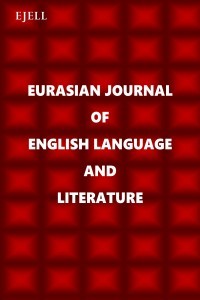The Empowered Woman Image in The Japanese Yamauba Myth: “Yamauba The Devouring Witch”
The Empowered Woman Image in The Japanese Yamauba Myth: “Yamauba The Devouring Witch”
yamauba, witch, evil-woman empowered woman,
___
- Bethe, M., Brazell, K. (1978). Nō as Performance: An Analysis of the Kuse Scene of Yamamba. Ithaca, NY: Cornell University Press.
- Copeland, R. (2005). “Mythical Bad Girls: The Corpse, the Crone, and the Snake.” In Bad Girls of Japan, ed. Laura Miller and Jan Bardsley, pp. 15–31. Palgrave.
- Hamilton, E. (1999). Mythology: Timeless Tales of Gods and Heroes, New York: Grand Central Publishing.
- Hulvey, SY. (2000). “Myths and Monsters: The Female Body as the Site for Political Agendas”, ed. Debra Walker King, Body Politics and The Fictional Double, Bloomington & Indianapolis: Indiana University Press, pp.71-88.
- Komatsu, K. (2000). “Kaisetsu: Tengu to yamauba” [Explanations of tengu and yamauba]. In Kaii no minzokugaku [Folklore of the strange], vol. 5, edited by Komatsu Kazuhiko, 417–434. Tokyo: Kawade Shobō.
- Miyake, H. (2001). Shugendō: Essays on the Structure of Japanese Folk Religion. Ann Arbor: Center for Japanese Studies, University of Michigan.
- Mizuta, N. (2002). 水田宗子. “Yamauba no yume: joron to shite” 山姥の夢: 序論として. In Yamauba tachi no monogatari: josei no genkei to katarinaoshi 山姥たちの物語: 女性の原型と語りなお し. Ed. Mizuta Noriko and Kitada Sachie 北田幸恵, pp. 7–37. Gakugei Shorin.
- Reider, N. (2005).“Spirited Away: Film of the Fantastic and Evolving Japanese Folk Symbols.” Film Criticism, 29(4), 4-27. Web. http://www.jstor.org/stable/44019178
- ---. (2010). Japanese Demon Lore: Oni from Ancient Times to the Present. Utah State University Press.
- ---. (2019). “Yamauba and Oni-Women Devouring and Helping Yamauba are Two Sides of the Same Coin.” Asian Ethnology, 78(2), 403–427. Web. https://www.jstor.org/stable/26845333
- ---. (2021). Mountain Witches: Yamauba. Utah State University Press.
- Sebastian-Jones, M. (2013). “Preface to the Special Issue on the Fairy Tale in Japan.” Marvels & Tales, 27(2), 172-178. Web. http://digitalcommons.wayne.edu/marvels/vol27/iss2/2
- Yamaguchi, M. (2009). Yamanba. Yama o oriru: gendai ni sumau mukashi-banashi. Tōkyō: Kōdansha.
- Yayın Aralığı: Yılda 2 Sayı
- Başlangıç: 2019
- Yayıncı: Karabük Üniversitesi
REPRESENTATION OF NARCISSISM IN TENNESSEE WILLIAMS’S SUDDENLY LAST SUMMER
The Experience of Hybridity in Caryl Phillips’s A Distant Shore and Andrea Levy’s Small Island
De-poeticizing poetry, De-semiotizing performance: A reading of Benjamin Zephaniah’s “Dis poetry”
The Empowered Woman Image in The Japanese Yamauba Myth: “Yamauba The Devouring Witch”
Investigating Strategies of Dubbing Culture-Specific Items in English-Arabic Animated Cartoons
Determinism and Voluntarism in Steve Waters’ The Contingency Plan: An Eco-Critical Reading
Jebreel A. IBRAHIM, Harith TURKI
Pandemic Narrative, Cultural Fears and Stephen King's Novel The Stand
Muzaffer Zafer AYAR, Saliha ŞAHİN
“FROM MARGIN TO CENTRE”: SUZANNE ALEXANDER IN KENNEDY’S OHIO STATE MURDERS
